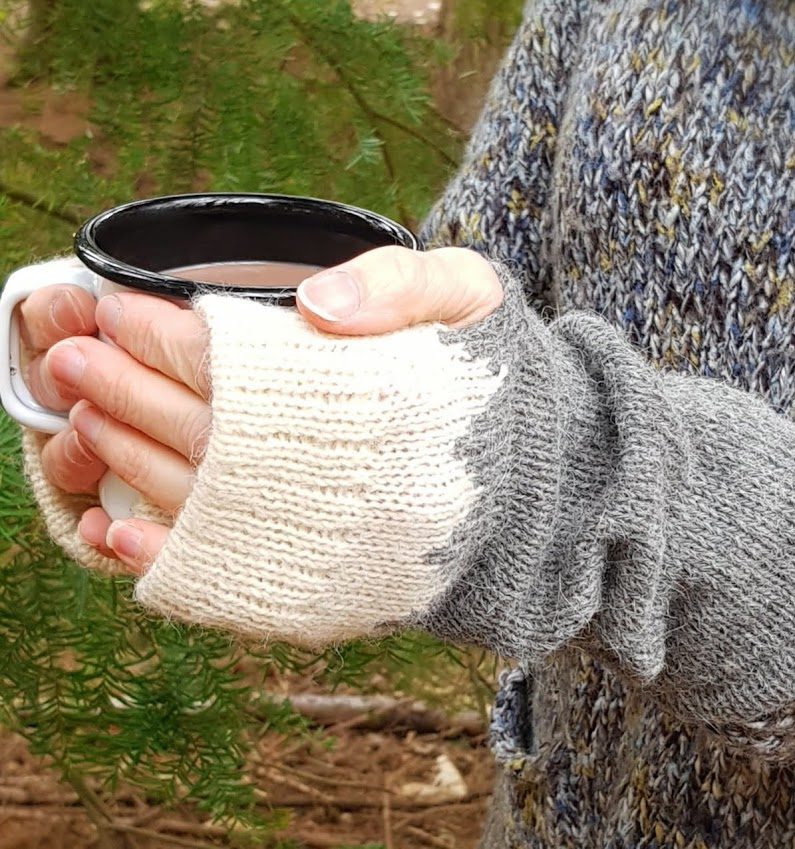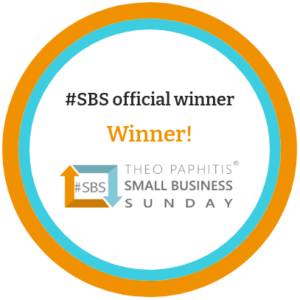Hygge really hit the headlines in the UK in 2017 when it was added to the Oxford English Dictionary as the nation strived to attain that famous Danish happiness, but where did it come from? How do you pronounce it? And can you really feel hyggelig on your own? The first recorded mention of the word “hygge” was in Denmark in the 19th century but it is thought to derive from the Old Norse, hygga, “to comfort”; I can certainly think of no greater way for our Viking ancestors to maximise their well-being over a cold dark winter than staying indoors with a dice game and a few beers with mates. So let’s get on to the important questions…
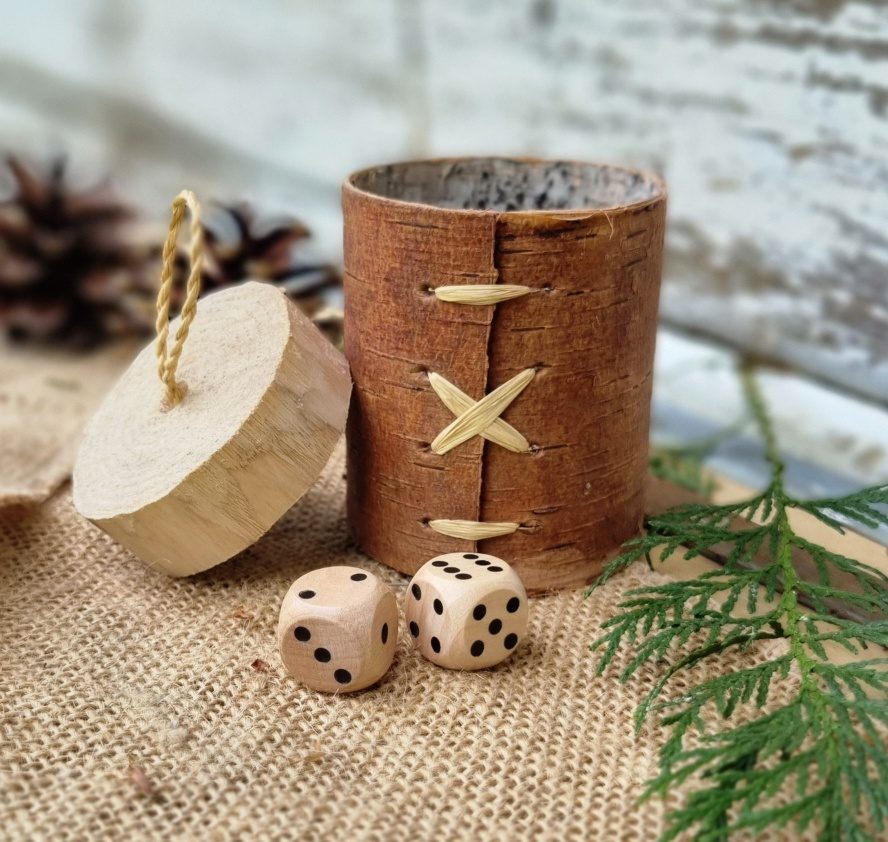
How do I pronounce “hygge”?
Well, definitely not ”hidgey” for a start, which is how my brother likes to say it to wind me up. The best way to say it is HOO-guh, with the emphasis on the first syllable; the adjective is “hyggelig”, which is pronounced “hoogly” (as in “wow, that was a really hyggelig evening last night, I’ve never eaten so much pudding” or “I really loved that pub, it was so hyggelig”).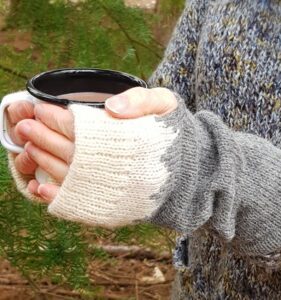
What is a “hyggekrog”?
Ah, good question! Pronounced “hoo-guh-kro” it translates directly as a hygge nook or corner, and is the area of your home specifically designed to be comfortable and inviting for you and your guests. In our home it is designated by what we call “The Hole”, the area of our battered yet irresistible L-shaped sofa where there is a) plenty of room to snuggle up with your beloved and watch a documentary about Everest, and b) sixteen cushions at last count. There is also a coffee table for snacks and board games (made my boyfriend from scaffold boards), usually some sort of candle and a cat.
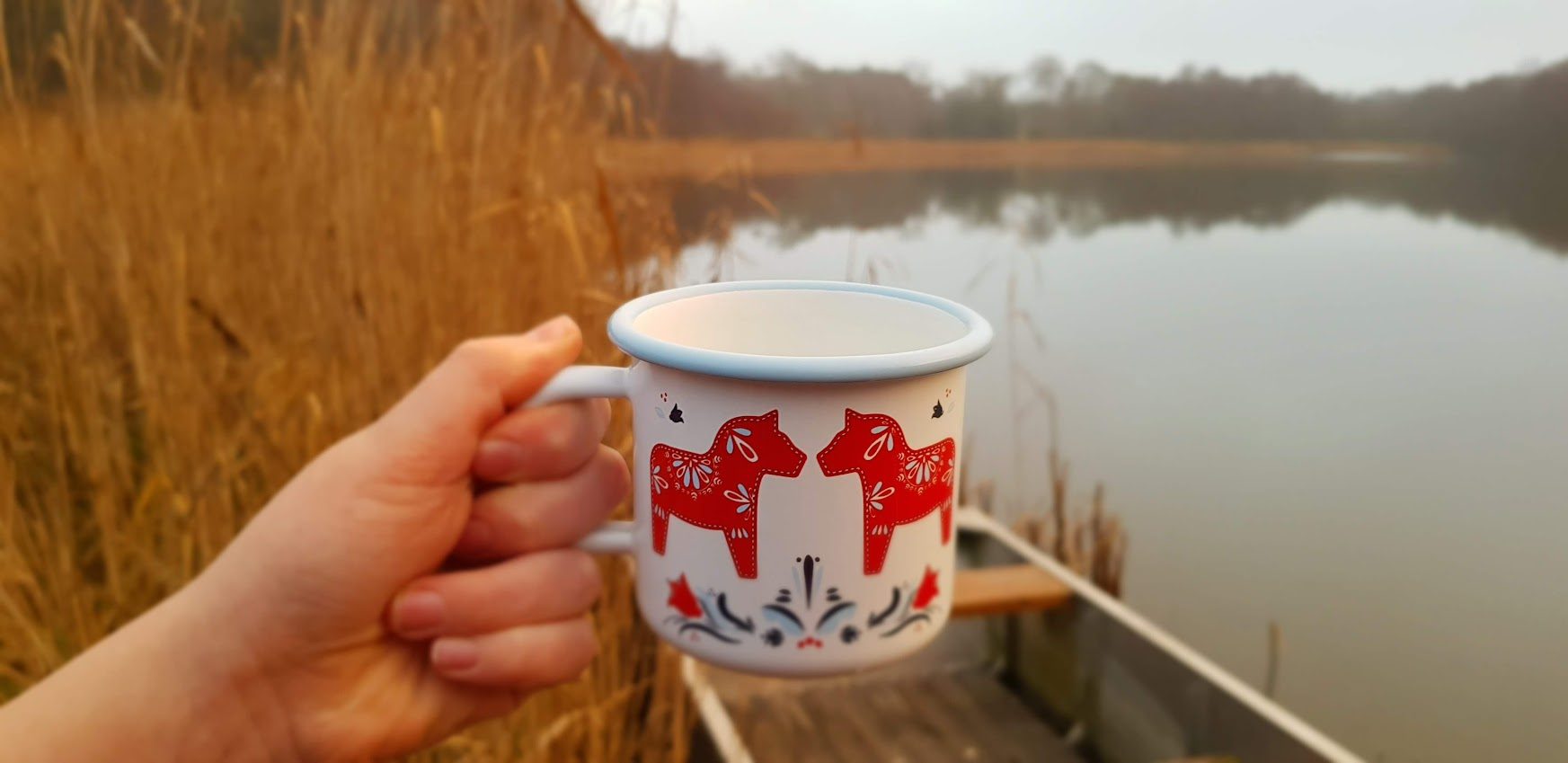
So what actually is hygge?
Now this is an interesting one. The general interpretation is that it means “cosy”; in the UK there is a feeling that as socks, candles and blankets are cosy, they must therefore be hygge… now in Denmark, they are still just essentially socks, candles and blankets, but what they can offer is contributing towards creating the environment for that feeling of hygge. Ideally you are providing a lovely space for your dear ones to connect and really be with each other; that sense of togetherness and contentment that comes from spending time with friends and family, with no pressure to do anything.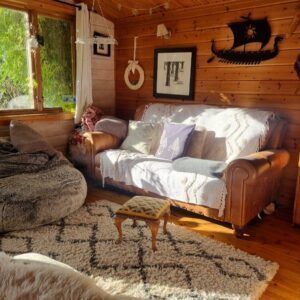
I conducted a non-scientific poll with my friends and family and asked them to define it, and here is an exceptional answer from my friend Rikke in Copenhagen; “Hygge means that you have created a setting that you feel comfortable in, with pleasant lighting e.g. candlelight, and nice seating arrangements. And if you have a guest, then make them feel comfortable, which always includes food to nibble on, tea and coffee or alcohol! Basically hygge is the feeling of being comfy, cosy and well fed, surrounded by friends and loved ones. You don’t need to be anything more than the person you are.”
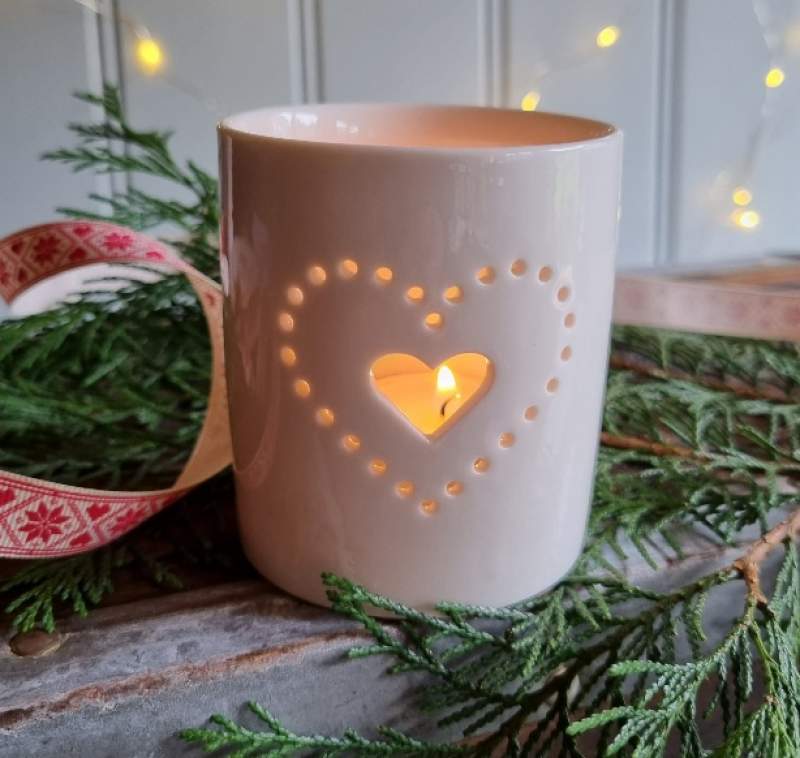
Hygge can’t be forced, and all the candles in the world won’t make a teenager willingly play Scrabble if they’re not in the mood; hygge just happens…and not necessarily in the places where you would think. Although I live in a log cabin jammed with sheepskin rugs, candles and fairy lights, some of my fondest hyggelig moments are in the strangest of places; sat on a bag for life in the pouring rain in the woods with two girlfriends sharing one manky cereal bar between three of us, or drinking a flask of tea with my boyfriend in a Icelandic blizzard so extreme that visibility was down to about 10 yards and where I had accidentally jammed the hire-car sun roof open.
Another very good example is a Danish wedding I attended last year with my son; it was 34 degrees, everyone was massively hungover and I was desperate to flop in the lido next door for a few minutes to cool my blood. I returned to find my teenage son eating smørrebrød (open sandwiches) and cosied up watching a zombie flick with a lady he had only met the day before on the tiny screen of her iphone. “Ah, you have to find the hyggelig moments wherever you can,” she said, passing him another boiled egg.
As you can gather hygge is also very strongly associated with food, drink and mealtimes; in Denmark dining can last hours (I’ve attended Julefrokost Christmas lunches which lasted 11 hours and where we all had to have a nap on the sofa half way through) and the fact that it is so leisurely and often punctuated with alcohol adds to a sense of relaxation which is wonderful. You can’t worry about when your MOT runs out when you’re on your fourth glass of aquavit and there’s rice pudding on the horizon.
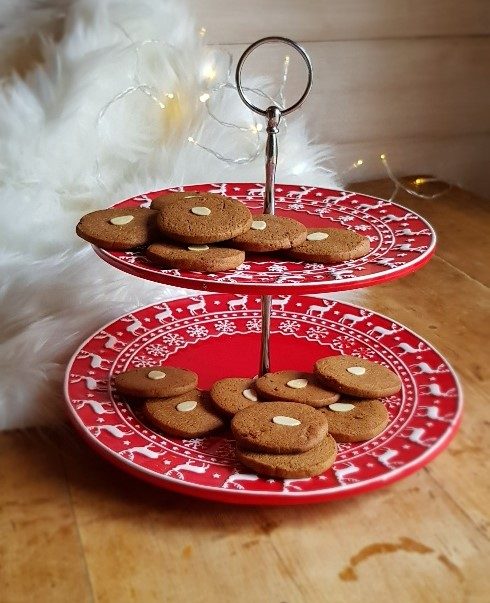
Don’t listen to anyone who says hyggelig food should only be healthy and nourishing; while New Nordic cuisine promotes “purity, simplicity and freshness”, using seasonal ingredients and old-school methods of baking, fermentation etc, traditional Danish food is largely based on a farming heritage with an emphasis on dairy, rye, pork, fish and root vegetables. Think meatballs, gravy and potatoes, risengrød (my favourite, rice pudding with a lump of butter and cinnamon) or “burning love” (brændende kærlighed), a very tummy-friendly dish of mashed potato topped with bacon and fried onions; if you can fry your comfort dinner in butter, so much the better according to my family! Danes also love sugar, pastry and cake, with the average Dane eating 6.6 kilos of sweeties a year (not including chocolate!) according to the Ministry of Food, Agriculture and Fisheries of Denmark… you can find some of my family’s favourite hygge recipes here 🙂
Can you be hyggelig on your own?
Again, the popular interpretation in the UK is that yes, a hot bath can be hyggelig, and I can’t count the number of websites that will recommend mindfulness, journalling, de-cluttering or “creating a sanctuary” in order to generate hygge; to Danes however, that is cobblers missing the point, as it’s really just a cultural mindset where you are fully invested in whatever you are up to, along with some great mates. According to my cousin Claus (a famous Danish AC/DC tribute act and all round Viking) “you are not really hygge-ing if you’re alone, it’s normally with someone else.” His favourite set up is a “great camp-fire, the smell of smoke and some friends. And some beer.”
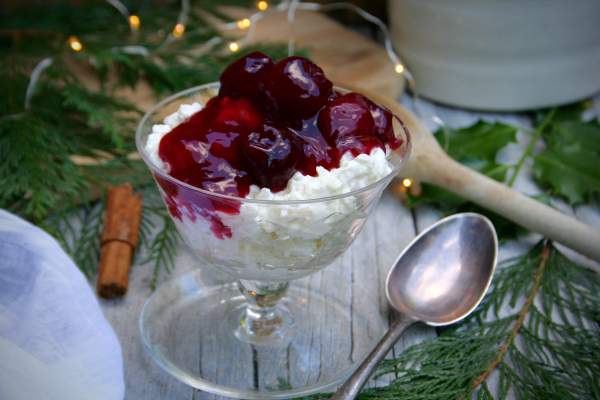
Hygge tends to happen in small groups of people who know each other well; however in Denmark there is also “fællesspisning” which translates as communal eating; dining is at long tables where chat is actively encouraged with your fellow guests (and it’s usually cheap!). A great place to try in Copenhagen is Absalon, where dinner is served at 6pm and is usually followed by some sort of activity such as dancing, a craft session or bingo.
Am I already hyggelig?
Yep, I would think you probably are! As I mention in my book “Craft Your own Cosy Scandi Christmas,” I think that most people have always had the concept of hygge, even if they didn’t know the name for it; family roasts, Sunday walks, rainy afternoons with board games and cake… all these embody that nice feeling.
How can I make my Christmas more hygge?
As a child I was taught traditional Danish recipes and crafts by my grandmother (having been forced to curtsy most resentfully to her first) and childhood holidays were spent at the family farm on the island of Sjælland. Long golden summers were whiled away playing in the dark pine forests and on the white sandy beaches, but Christmas was a time for cutting paper decorations, baking and singing carols, and eating our own body weight in brunkager biscuits.
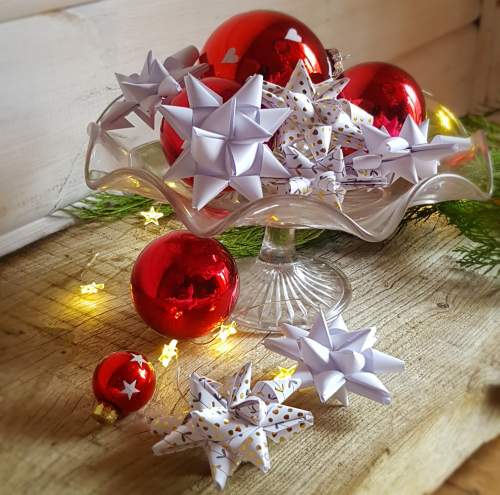
Even though we no longer spend all our winters in Denmark (I do pop over frequently to stock up on gravy browning), we still carry on the traditions with which I grew up, celebrating Christmas Eve by lighting candles in the garden for the reindeer to find our house, cooking roast pork and red cabbage and then enjoying a good-natured squabble over a game or two (Pakkeleg is a must!). Make some sweets and hot chocolate as a bribe to get the kids round the table with some Christmas crafting, lure them into a dice game or take them out foraging for some sprigs of greenery and a few pine cones to ram in a jug. Make a foraged wreath for your door, or chop up a duvet cover to make a rag wreath and upcycled fabric tinsel. and don’t forget the Danish paper woven hearts!
Is hygge just for winter?
Nope, you can hygge all year long. Whether you’re camping in the rain, eating wet sandwiches in the car or playing dice with your son waiting for a delayed train, it can still be hyggelig, as long as you’re totally embedded in the moment with people you like. Enjoy every single one. Forget the MOT. And as Claus says, “there is nothing more hyggeligt than the Walking Dead!” 🙂 x
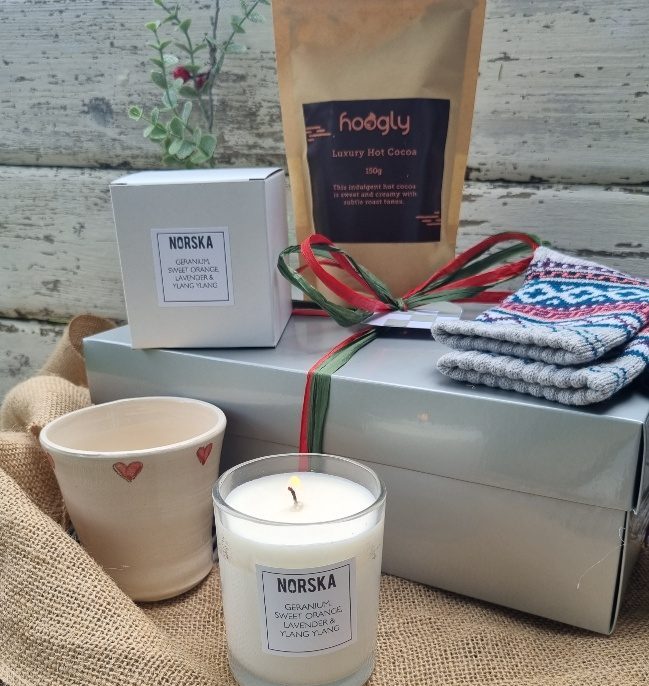
“Cosy night in” hygge gift box
This beautiful hygge gift is the perfect present for those who love to snuggle up in the evenings! Beautifully packaged in a re-usable silver gift box with tissue and ribbon, the package contains;
- 1 x Hygge Hearts mug. Hand-thrown exclusively for us by the talented Sage Ceramics, this beautiful cup is perfect for soup, hot chocolate or even mulled wine!
- 1 x pack of luxu…

